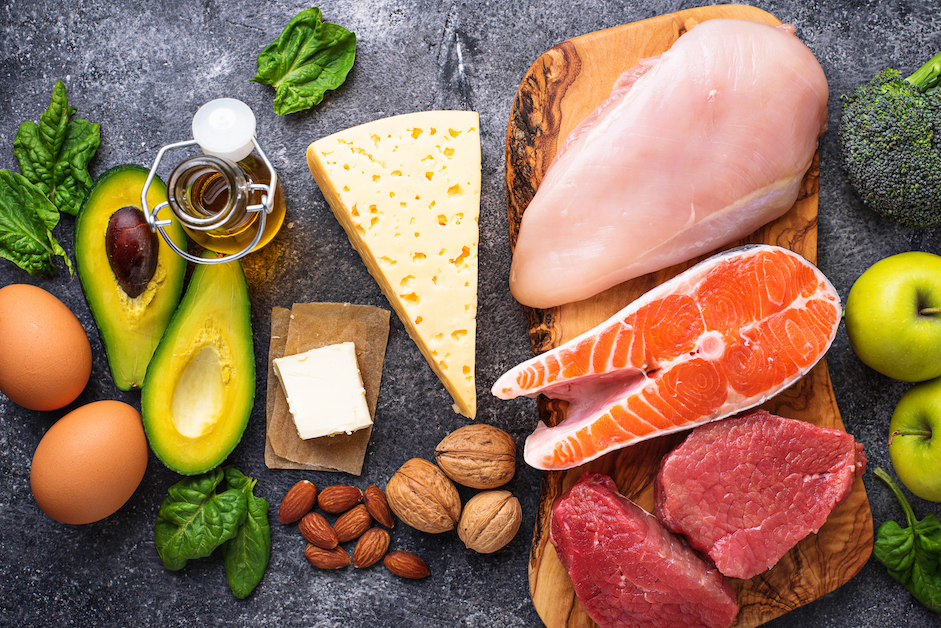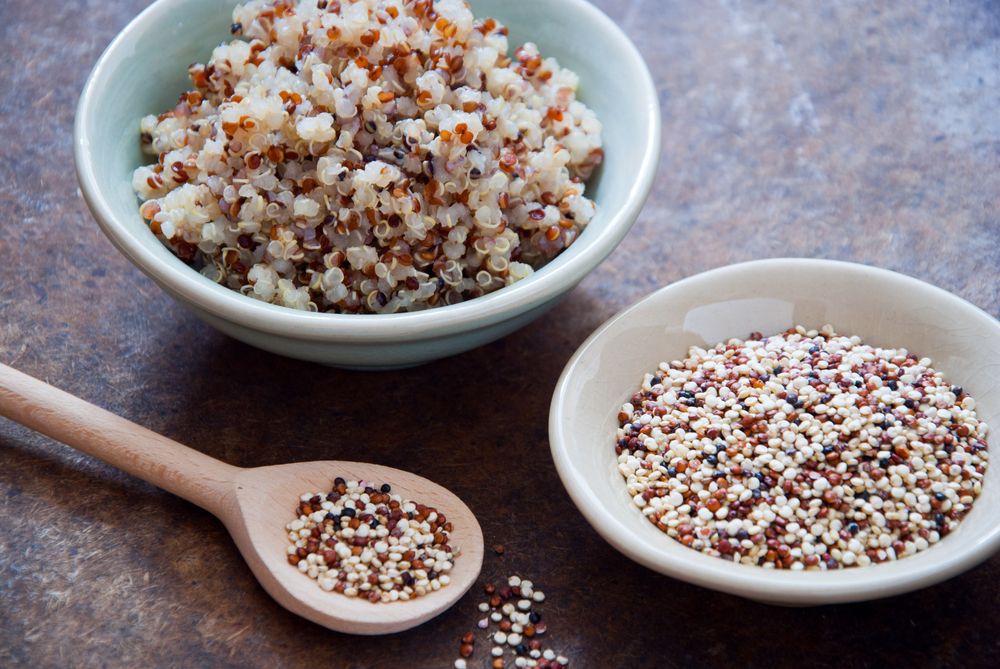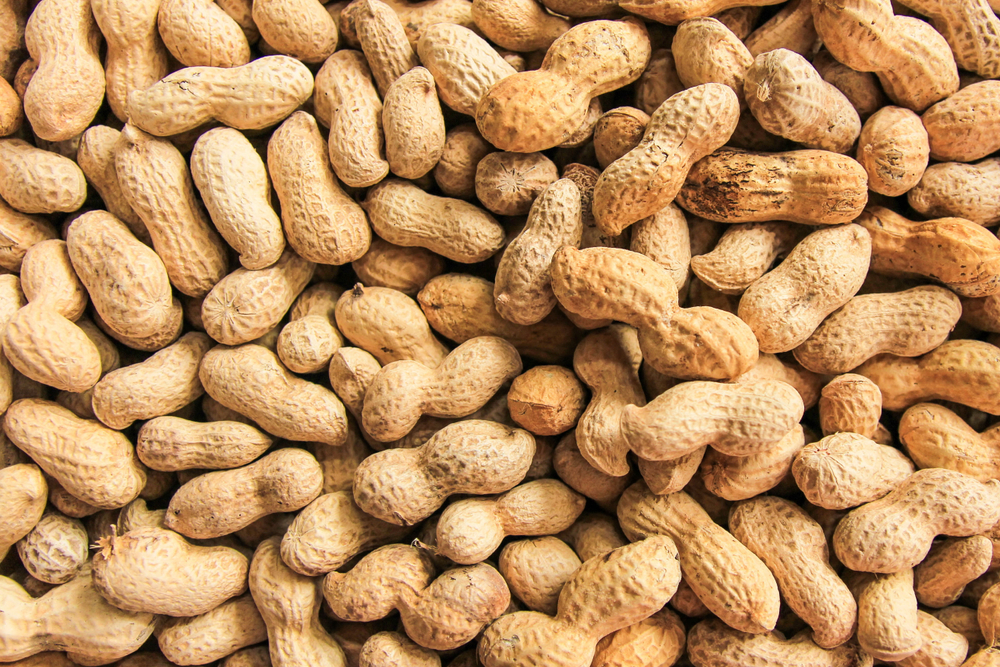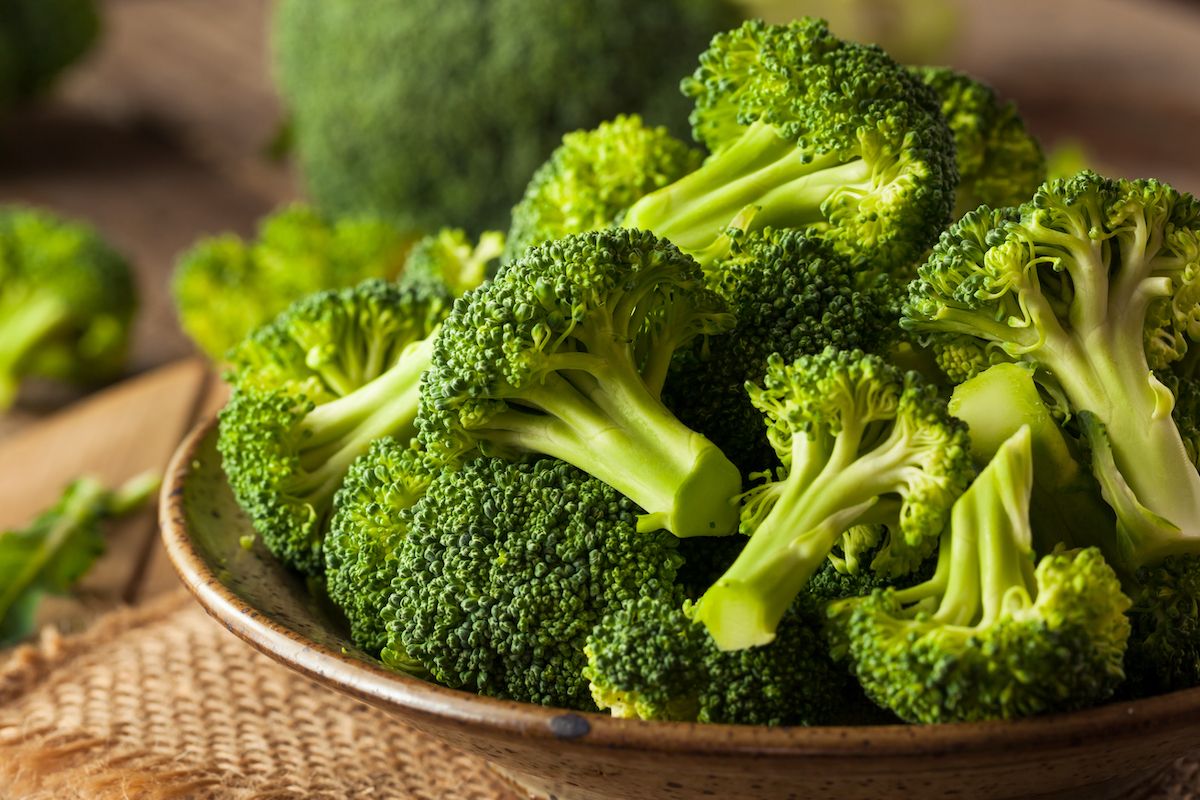SUMMARY
By putting your body in ketosis, a Keto diet can help you burn fat and lose weight. It requires you to lower the amount of carbs you eat and increase your intake of fat.
Table of Contents
What is the Keto Diet?
How Does the Keto Diet Work?
Benefits of the Keto Diet
Risks of the Keto Diet
Getting Started on the Keto Diet
What To Expect Short-Term: Week-By-Week
Practicing Keto Long-Term: 6 months and Beyond
Common Mistakes When Starting Keto
The Role of Exercise in a Ketogenic Diet
Tips For Meal Prepping and Planning on Keto
Conclusion
Keto Diet FAQs
Introduction To Keto
The Keto diet is a high-fat, low-carb diet that can help with weight loss, reduce inflammation, increase energy levels, and reduce the risk of certain diseases. However, it may also come with risks, such as nutrient deficiencies, the “Keto flu,” and difficulty in sustaining it long-term. To minimize these risks, it’s important to consult with a healthcare provider, plan your meals, choose nutrient-dense foods, and consider supplementation.
What is the Keto Diet?
The Keto diet is a low-carb, high-fat diet that has gained popularity in recent years. The goal of the diet is to put your body into a state of ketosis, where it burns fat for energy instead of glucose.
On the Keto diet, you will consume foods that are high in healthy fats, such as avocado, nuts, and olive oil, and restrict your intake of carbohydrates, such as bread, pasta, and sugar. Protein is also a part of the diet, but it’s usually consumed in moderation.
How Does the Keto Diet Work?
When you restrict your intake of carbohydrates, your body is forced to rely on fat for energy. As a result, your liver produces ketones, which are molecules that your body can use for energy instead of glucose. When you are in a state of ketosis, your body burns fat more efficiently, leading to weight loss. The diet can also help to reduce inflammation, lower blood sugar levels, and improve overall health.
In terms of your macronutrients, you’ll consume around 60% fat, 30% from protein and 10% carbs. While there are multiple ways to practice Keto, we recommend doing “Clean Keto” so you’re reducing the risks that come with eating large amounts of unhealthy fats.
But what about counting carbs? If you’re thinking 10% of your daily intake doesn’t sound like much, you’re right. On a standard 2,000 calorie per day diet, you’ll be consuming 20 to 50 g of net carbs per day.
Now this is where you can make or break the Keto diet. “Net carbs” is just total carbs from total fiber, as long as the fiber is insoluble.
Soluble vs Insoluble Fiber
Insoluble fiber doesn’t dissolve in water and adds bulk to the stool, promoting regular bowel movements and preventing constipation.
Soluble fiber dissolves in water and forms a gel-like substance in the intestines, helping to slow down the digestion process and stabilize blood sugar levels.
To keep it simple, both soluble and insoluble fiber are counted towards total carbohydrate intake, but only insoluble fiber is subtracted from total carbs to determine net carbs
That’s because soluble fiber requires energy to break down and can be partially converted into fat by gut bacteria, which can provide additional calories for the body. The good news, there are many vegetables that contain from insoluble fiber.
If you want to make sure you’re doing Keto right make sure to follow this formula:
NET CARBS = TOTAL CARBS – INSOLUBLE FIBER
Here are some examples of how you’ll calculate net carbs:
- Raspberries (7g Net Carbs = 15g Total Carbs – 8g Fiber)
- Watermelon (10.4g Net Carbs = 11g Total Carbs – 0.6g Fiber)
- Pumpkin (7.4g Net Carbs = 8g Total Carbs – 0.6g Fiber)
- Mango (22.4 g Net Carbs = 25g Total Carbs – 2.6g Fiber)
- Lentils (12g Net Carbs = 20g Total Carbs – 8g Fiber)
- Carrots (8.4g Net Carbs = 12g Total Carbs – 3.6g Fiber)
If these numbers are making your eyes glaze over, don’t sweat it, most Keto-friendly items have total net carbs printed on their labels. There are also Keto calculators that can help with this too.

Benefits of the Keto Diet
The Keto diet has been associated with a number of health benefits, including weight loss, reduced inflammation, increased energy levels, and a reduced risk of certain diseases.
- Weight Loss – The Keto diet has been shown to help people lose weight quickly, especially in the first few weeks of the diet. This is because the body is burning fat for fuel instead of glucose.
- Reduced Inflammation – The Keto diet can help to reduce inflammation in the body, which is associated with a number of chronic health conditions, such as heart disease, cancer, and Alzheimer’s disease.
- Increased Energy Levels – Many people report feeling more energetic and alert on the Keto diet. This is because the body is using fat for fuel, which provides a more stable source of energy compared to glucose.
- Reduced Risk of Certain Diseases – The Keto diet may also reduce the risk of heart disease and certain types of cancer, such as breast and colon cancer.
Risks of the Keto Diet
While the Keto diet can be beneficial for many people, it can also come with some risks. These may include nutrient deficiencies, the “Keto Flu,” gastrointestinal issues, a negative impact on athletic performance, and difficulty sustaining the diet long-term.
- Nutrient Deficiencies – Since the Keto diet restricts certain food groups, it can be challenging to get all the necessary nutrients, such as fiber, vitamins, and minerals. This can lead to deficiencies and negative health outcomes over time.
- “Keto Flu“ – As your body adjusts to the new diet, you may experience symptoms such as fatigue, headaches, and nausea, which are commonly referred to as “Keto Flu.”
- Gastrointestinal Issues – The high fat intake in the Keto diet can cause gastrointestinal issues such as constipation, diarrhea, and stomach pain
- Negative Impact on Athletic Performance – Since the Keto diet limits carbohydrate intake, which is the primary source of fuel for high-intensity exercise, it may negatively impact athletic performance. This is especially true for activities that require bursts of energy or long-lasting endurance.
- Difficulty Sustaining the Diet Long-Term – The Keto diet can be challenging to sustain long-term, which may lead to weight regain and a cycle of yo-yo dieting. It’s important to have a solid plan and support system in place to help maintain the diet and ensure long-term success.
It’s essential to note that the Keto diet may not be suitable for everyone, especially individuals with certain medical conditions such as diabetes, liver or pancreatic disease, or a history of disordered eating.
Before starting any new diet, it’s best to consult with a healthcare professional to determine if it’s appropriate for your individual needs and goals.
Getting Started on the Keto Diet
If you’re interested in trying the Keto diet, here are some tips to help you get started:
- Consult with a Healthcare Provider – It’s important to consult with a healthcare provider before starting the diet, especially if you have any preexisting health conditions.
- Plan Your Meals – Planning your meals ahead of time can help to ensure that you are getting enough nutrients and staying within your daily carbohydrate limit. There are many resources available to help you plan your meals, such as cookbooks, meal plans, and online recipes.
- Choose Nutrient-Dense Foods – Choose foods that are high in nutrients, such as leafy greens, nuts, and seeds, to ensure that you are getting the nutrients you need. It’s also important to choose healthy sources of fats, such as avocado and olive oil.
- Consider Supplementation – You may also want to consider taking a multivitamin or other supplements to ensure that you are getting all the nutrients you need.
- Be Patient – It can take some time for your body to adjust to the Keto diet and to enter a state of ketosis. Be patient with the process and don’t give up if you don’t see results right away.
- Monitor Your Progress – Keep track of your weight, energy levels, and other health markers to monitor your progress on the diet. This can help you to adjust your diet and lifestyle as needed to achieve your health goals.
Practicing Keto Short-Term: First 4 Weeks
Week 1
- Initial Weight Loss: Most people will experience a noticeable drop in weight during the first week, primarily due to water loss.
- Keto Flu: Some individuals may experience flu-like symptoms such as headaches, fatigue, dizziness, and irritability as their body adjusts to burning fat for fuel.
- Increased Thirst and Frequent Urination: As the body loses water, you may experience increased thirst and the need to urinate more frequently.
Week 2
- Keto Flu Subsides: For most people, the keto flu symptoms will start to subside as their body becomes more efficient at using ketones for energy.
- Appetite Suppression: Many individuals notice a decrease in appetite as their body becomes more adapted to ketosis.
- Increased Energy Levels: As the body continues to burn fat for fuel, many people report increased energy levels and mental clarity.
Week 3
- More Consistent Weight Loss: By week 3, most individuals will experience more consistent weight loss, as their body is now more adapted to burning fat.
- Improved Digestion: As the body becomes more accustomed to the keto diet, many people find that their digestion improves, and they experience less bloating and gas.
- Better Sleep: Some individuals report improvements in their sleep quality as their body continues to adapt to ketosis.
Week 4
- Increased Fat Burning: By week 4, the body should be efficiently burning fat for energy, leading to continued weight loss and improved body composition.
- Improved Athletic Performance: Some individuals may begin to notice improvements in their athletic performance as their body becomes more efficient at using fat for fuel.
- Enhanced Mental Focus: Many people report an increased ability to focus and think clearly, as their brain is now using ketones for energy.
Practicing Keto Long-Term: First 6 Months
Month 1
- Continued Weight Loss: Most individuals will continue to lose weight at a steady pace throughout the first month.
- Further improvements in energy levels and mental clarity: As the body becomes more efficient at using ketones for energy, many people report continued improvements in energy levels and mental focus.
Month 2
- Weight Loss May Slow Down: As the body becomes more efficient at burning fat, weight loss may slow down, but this is normal and should not be a cause for concern.
- Increased Muscle Tone: Some individuals may notice an increase in muscle tone as their body composition continues to improve.
Month 3
- Possible Weight Loss Plateau: Some individuals may experience a weight loss plateau during month 3, but by making small adjustments to their diet and exercise routine, they can usually break through it.
- Improved Overall Health: Many people report improvements in various health markers, such as lower blood pressure and better blood sugar control.
Month 4
- Continued Gradual Weight Loss: Most individuals will continue to lose weight at a slower, more gradual pace throughout month 4.
- Further Improvements in Overall Health: Many people will continue to see improvements in their overall health and well-being.
Month 5
- Possible Weight Loss Maintenance: Some individuals may reach their weight loss goals by month 5 and begin focusing on maintaining their weight and overall health.
- Continued Improvements in Athletic Performance and Mental Clarity: Many people will continue to experience improvements in their athletic performance and mental focus.
Month 6
- Weight Loss Maintenance or Further Weight Loss: Depending on individual goals, some people may continue to lose weight, while others will focus on maintaining their weight loss.
- Continued Overall Health Improvements: Many people will continue to see improvements in their overall health and well-being.
Common Mistakes When Starting The Ketogenic Diet
- Not Eating Enough Healthy Fats: One of the primary goals of the Keto diet is to enter a state of ketosis, where your body is burning fat for energy instead of glucose. Without enough healthy fats in your diet, you may experience hunger and cravings, making it difficult to sustain the diet long-term. Make sure to include foods like avocado, nuts, and olive oil in your meals.
- Not Drinking Enough Water: The Keto diet can cause your body to lose water and electrolytes quickly, leading to dehydration and negatively impacting your energy levels. To avoid this, drink plenty of water throughout the day and consider adding electrolytes like sodium, potassium, and magnesium to your diet.
- Eating Too Much Protein: While protein is an important part of the diet, eating too much can prevent your body from entering ketosis. Aim for moderate protein intake and focus on healthy fats as your primary source of energy.
- Not Being Mindful of Hidden Sources of Carbohydrates: Many condiments and sauces contain hidden sources of carbohydrates that can quickly add up and push you out of ketosis. Read food labels carefully and be mindful of the carbs in the foods you eat.
The Role of Exercise in a Ketogenic Diet
While the Ketogenic diet can help with weight loss and improve overall health, exercise can also play an important role. Exercise can help to improve insulin sensitivity, build muscle mass, and enhance cardiovascular health. However, it’s important to adjust your exercise routine to fit your energy levels and needs while on the Ketogenic diet. For example, you may need to incorporate more low-intensity exercises such as walking or yoga to avoid fatigue and reduce the risk of injury.
Tips For Meal Prepping and Planning on Keto

Meal planning and preparation can be key to success on the Ketogenic diet. It’s important to plan your meals ahead of time and make sure they are balanced and nutrient-dense. This can help to ensure that you are getting enough healthy fats, protein, and fiber to stay in ketosis and avoid hunger and cravings. If you’re looking into meal prep, try batch cooking and stocking up on Keto-friendly snacks so you’re not reaching for anything that’s not Keto-friendly if those cravings do kick in. There are also plenty of Keto-friendly recipes and cookbooks online that can help inspire some meals to try!
Conclusion
The Keto diet is a high-fat, low-carb diet that has gained popularity in recent years. It can be an effective way to lose weight, improve your health, and enhance your energy levels. However, it’s important to be aware of the risks of the diet and to consult with a healthcare provider before starting it. By carefully planning your meals, choosing nutrient-dense foods, and monitoring your progress, you can achieve your health goals on the Keto diet. If you still need support, here are over 90+ Keto resources to help you succeed with the Keto diet.
If getting started on Keto still feels overwhelming, don’t worry, we’ve got you covered. Our team of talented chefs prepares fresh, flavorful, and Keto meals that are sure to satisfy your taste buds. With over 30 menu items to choose from, you can enjoy the benefits of the Keto diet without having to sacrifice taste or nutrition.
Keto Diet FAQs
Here are some commonly asked questions about the Ketogenic diet.
Is Keto a fad diet?
Unlike many fad diets that encourage starvation or calorie restriction, the Keto diet focuses on reducing carbohydrates and increasing healthy fats to put your body into a state of ketosis, where it burns fat for energy instead of glucose.
Is Keto short-term or long-term?
While the Keto diet is mainly used for short-term weight loss, it can also be sustained for longer periods of time under the supervision of a healthcare provider or registered dietician nutritionist. Many people choose to make Keto a lifestyle and find it easier to manage by trying different variations.
Is Keto just low-carb?
No, the Keto diet isn’t just low-carb it’s also high-fat. While you are decreasing carbs in the day, you are also bulking up on fats to create ketones and burn more fat. You cannot achieve ketosis without adding the fats, too.
Is Keto hard?
Starting the Keto diet can be time consuming and stricter than other plans since cheat days aren’t allowed. You’ll also need to figure out what you can and can’t eat, how to prepare Keto-friendly meals, and manage self-control and carvings. However, with a basic understanding of the Keto diet and having the right resource to support you, you’ll start seeing the benefits. Through this Keto series we’ll do our best to provide helpful tips and tools to help make the Keto diet easy.
Keto vs. Paleo: what’s the difference?
The Keto diet increases fat intake to burn fat, while the paleo diet focuses on increasing protein intake to make it the bulk of the diet, instead. For the “moderate” macronutrient, it is flipped. Both decrease carbs, but Keto cuts carbs lower. Both focus on decreasing sugar.
Keto vs. Atkins: what’s the difference?
Atkins is a program that focuses on eating meals and snacks as part of the Atkins plan, while Keto does not have such resources and provides more flexibility. The main difference is that you gradually increase carb count on Atkins as you go through the diet process, where you stay at the same count for Keto.
References
- Paoli A, Rubini A, Volek JS, Grimaldi KA. Beyond weight loss: a review of the therapeutic uses of very-low-carbohydrate (ketogenic) diets. Eur J Clin Nutr. 2013;67(8):789-796.
- Masood W, Uppaluri KR. Ketogenic Diet. In: StatPearls. Treasure Island (FL): StatPearls Publishing; 2020.
- Manninen AH. Metabolic effects of the very-low-carbohydrate diets: misunderstood “villains” of human metabolism. J Int Soc Sports Nutr. 2004;1(2):7-11.
- Harvard Health Publishing. (2020, July). The truth behind the most popular diet trends of the moment. Harvard Health.
- Volek, J. S., Phinney, S. D., Forsythe, C. E., Quann, E. E., Wood, R. J., Puglisi, M. J., Kraemer, W. J., Bibus, D. M., Fernandez, M. L., & Feinman, R. D. (2009). Carbohydrate restriction has a more favorable impact on the metabolic syndrome than a low fat diet. Lipids, 44(4), 297–309.




